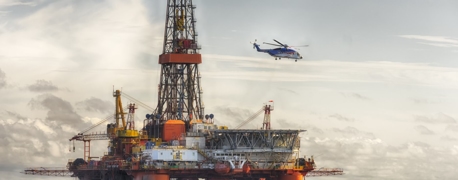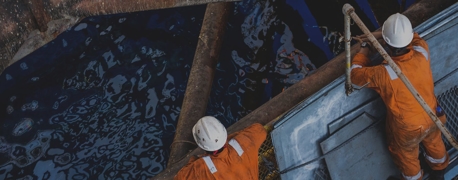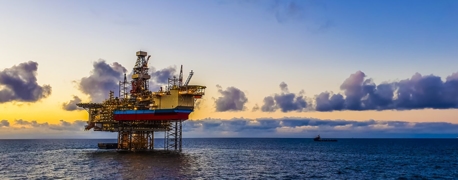Hurricane Season: How Offshore Workers Prepare

It was the peak of the Atlantic hurricane season. Just before dawn, an alert about an impending storm reached Ocean Titan, a large offshore rig operating about 20 miles off the Texas coast in the Gulf of Mexico. The hurricane, soon to be named Osiris, was headed straight for the Gulf. Upon receiving the update, the weather officer immediately reported to the rig's captain.
Recognizing the seriousness of the situation, the captain initiated the hurricane response plan. He gathered his team leaders and reminded them that their primary focus was the safety of the crew.
The crew got to work, implementing the well-rehearsed plan. Non-essential personnel were evacuated first, leaving only a skeleton crew behind. All equipment was securely fastened, and drilling operations were gradually shut in. Meanwhile, they closely monitored the path of Hurricane Osiris.
Two days before the expected landfall of Osiris, the captain ordered the evacuation of the remaining crew. The final helicopter left the rig, leaving the Ocean Titan alone to face the approaching storm.
Throughout the hurricane, the rig withstood the harsh weather conditions. Its GPS tracking system allowed the crew, now safe on land, to monitor its status.
Once the storm passed, a team conducted an aerial assessment of the rig. It stood intact, demonstrating the effectiveness of their preparation measures. Within a week, Ocean Titan was back in operation. Most importantly, no crew members were injured.
The story of Ocean Titan and Hurricane Osiris may be fictional, but it serves as an example of how proper hurricane preparedness can save platforms and their crews.
The Atlantic hurricane season, which lasts from June 1 to November 30, is an annual reminder of the extraordinary challenges that can be faced by offshore workers in the oil and gas industry. When a potentially destructive hurricane season is forecasted, extensive planning and well-practiced procedures must come into play to ensure the safety of personnel and the integrity of the rig.
What does it take to prepare an oil rig for a massive storm? Here, we will consider the steps that must be taken by offshore crews and their employers to prevent production losses and spills—and most importantly, human lives.
After all, hurricanes will come. It’s just a matter of when and where.
Hurricane Preparedness Is a Year-Round Responsibility
Hurricane preparedness is not a one-time obligation. It must be continually tested and adjusted depending on new technology and regulations as well as weather forecasts. Throughout the year, rig operators must conduct evacuation drills, test critical equipment such as generators, batteries, and communication systems, and update their hurricane response plans.
Platforms themselves should be built to industry standards. To fortify offshore rigs for hurricane season, drilling experts employ an advanced system of anchoring. Before the season even begins, the rig is securely anchored to the ocean floor using four primary support anchors placed at its corners. As an additional safeguard, two extra anchors are placed between each pair of corner anchors, bringing the total to eight anchors. Some rigs have 12-point mooring systems. These anchoring systems help to ensure the stability of the rig against the ferocious onslaught of a hurricane.
How Offshore Workers Weather a Storm
Stage 1: A Threat Emerges
Upon detection of a potential storm, private meteorological firms and the National Weather Service provide regular weather updates. From this point, daily or bi-daily meetings are held to assess operational activities, people count, and estimated time for shutting down operations and evacuating personnel. Initiation of evacuations and production shut-in should occur days before a hurricane is expected to reach a facility, considering various factors such as the location of assets, time taken for evacuation due to deep-water operations, the length of time needed to secure operations, and personal safety of employees whose homes might be in the storm's predicted path.
Stage 2: Danger Within 72 Hours
When a storm is anticipated to reach dangerous conditions within 72 hours, evacuation processes are ramped up, leaving behind only a small, essential crew on each platform. Subsequently, the shutdown of production begins, with special emphasis on securing long-lead wells and equipment.
Stage 3: Imminent Storm
As the hurricane's arrival becomes imminent, final evacuations are conducted.
Stage 4: The Aftermath
Once the storm passes and conditions are safe, aerial damage assessments are conducted. Teams return in stages to conduct thorough inspections and, if deemed safe, restart production and recommence drilling activities. The infrastructure's integrity is verified through pressure tests, helicopter overflights, and possibly sonar equipment, ROVs, or divers.
After operations resume, a review should be conducted to assess the process's effectiveness and identify areas for improvement in the hurricane response plan.
Chain of Command & Role-Specific Duties
During the above stages, each worker on an offshore rig plays a crucial role in the preparation process. The oil rig’s hierarchy–typically a manager at the top, followed by toolpushers, drillers, derrickhands, and roustabouts at the base–is clear, and each has a specific duty.
The manager, along with the support team, takes the lead in monitoring the weather conditions and coordinating evacuation plans. They also liaise with external agencies such as the Bureau of Safety and Environmental Enforcement (BSEE) and the National Weather Service, whose forecasts and guidance are crucial in the decision-making process.
Riggers and deckhands start securing all movable equipment, and underwater welders may perform necessary repairs or reinforcements to ensure the structural integrity of the rig. Meanwhile, roustabouts and other workers might speed up their operations to meet deadlines early and secure the rig in time.
Documenting & Securing the Rig
An important but often overlooked part of the hurricane preparation process is documentation. This includes recording the status of ongoing projects, noting the secure state of equipment, and making detailed plans for resuming operations after the hurricane.
The actual process of securing the rig is meticulous and extensive. Drill pipes are removed and secured, and all equipment is clamped down. The exact steps may vary depending on the specific rig and the nature of its operations, but the aim is always to minimize the risk of damage from rough seas and high winds.
Evacuation Plans
The decision to evacuate is not taken lightly and is typically based on the projected path and intensity of the storm. The rig manager, in consultation with the company's onshore management and guided by information and insight from agencies like BSEE and the National Hurricane Center, will determine if and when evacuation is necessary.
Workers are usually evacuated in stages, starting several days before the hurricane is expected to hit. The non-essential personnel are typically evacuated first, leaving a skeleton crew to complete the final preparations and secure the rig. The timing and order of evacuation can depend on several factors, including the worker's role, the nature of their work, and their location on the rig.
Once the decision to evacuate is made, the process is swift and organized, utilizing helicopters or boats to transport the workers to safety.
The Importance of Hurricane Preparedness in the Offshore Industry
Balancing oil production with worker safety is a delicate task. Companies must have well-established hurricane response plans ready long before the season begins, updated annually to minimize risk to the environment, production, and most importantly, their workforce.
Failure to prepare for hurricanes, an annual inevitability, can lead to devastating outcomes. Stories such as the near-capsize of the drillship Globetrotter II during the 2021 hurricane season serve as stark reminders. Caught in 80-foot swells and winds reaching 150 mph, the over 100-person crew lived through a terrifying ordeal, questioning why the evacuation hadn't been ordered before the hurricane hit.
Similarly, the loss of El Faro's 33-person crew in 2015 and the capsizing of Seacor Power in 2021 with a loss of 13 out of 19 crew members underscores the imperative for effective storm preparedness.
Given the remarkable advancements in weather prediction tools, we can now forecast hurricane paths and intensities with unprecedented precision. For maritime employers and oil and gas companies, it's more than a matter of business—it's a profound responsibility. These workers entrust their lives to their employers, and their safety must come first. Halting production and ensuring timely evacuations aren't just operational decisions; they're moral imperatives.
No amount of productivity is worth more than a worker’s life. No matter what.


